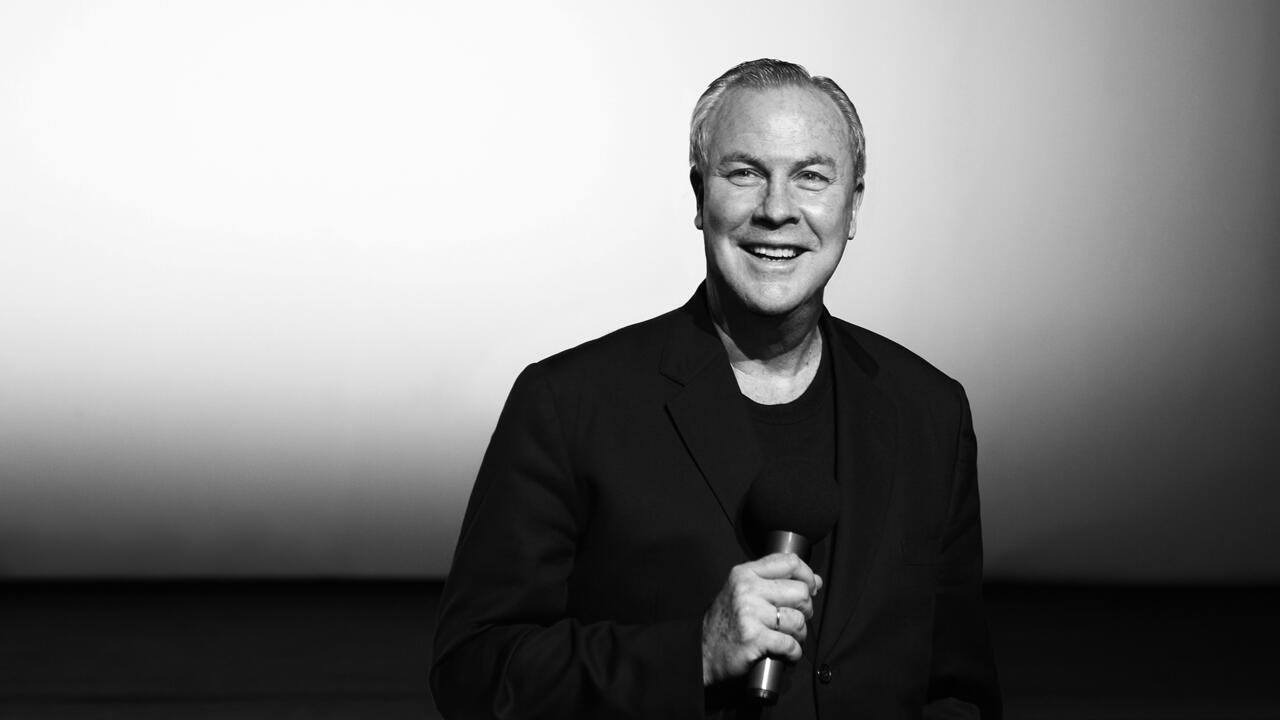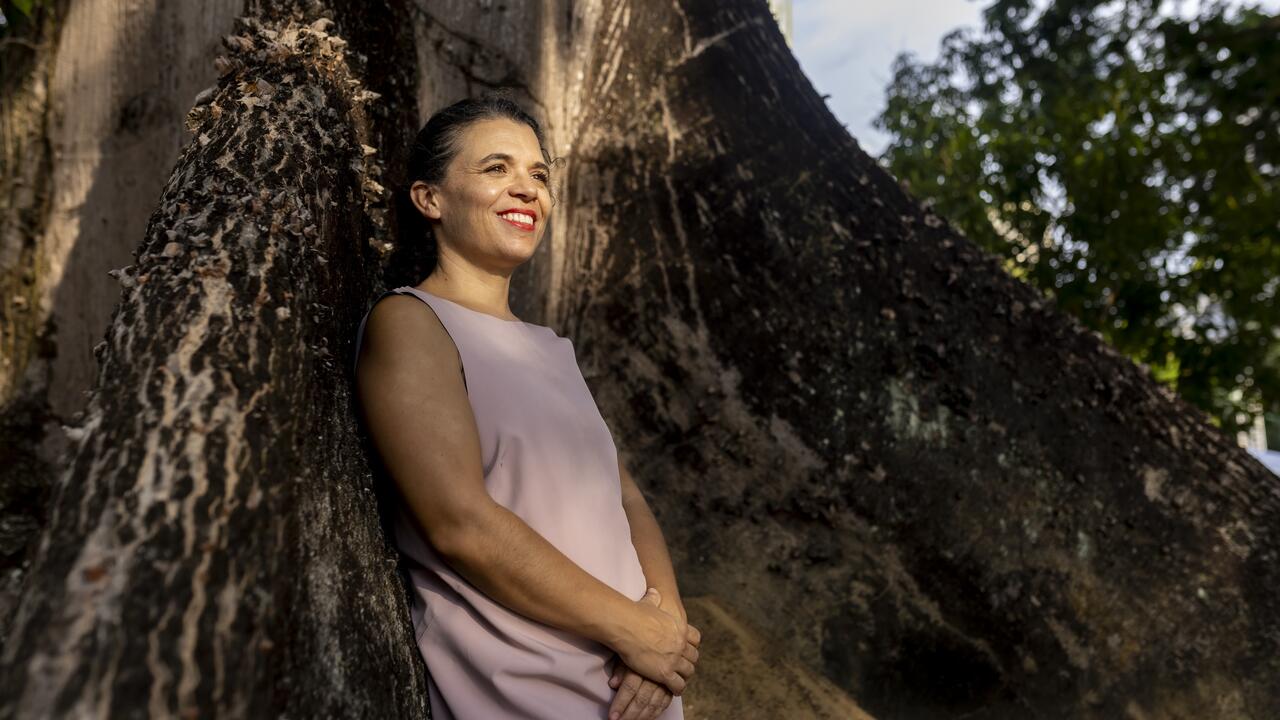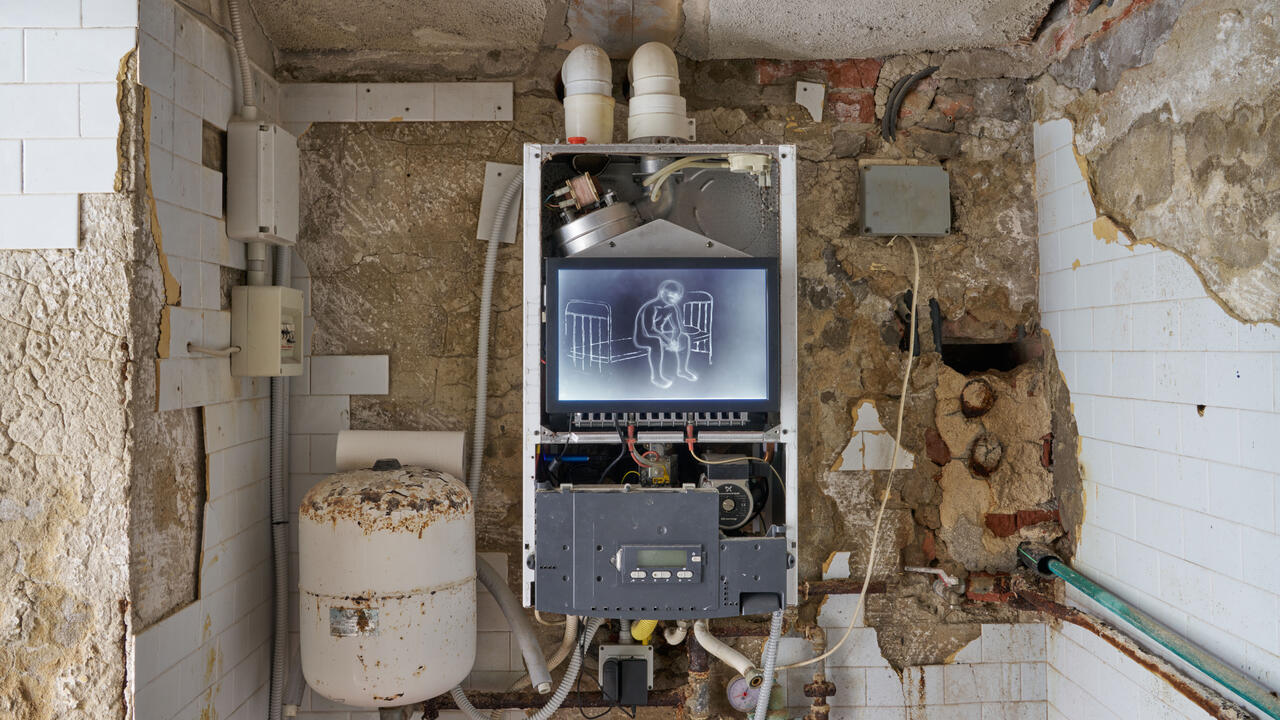Secrets and Lies
Vegetables, families and psycho-sexual behaviour jostle for position in Philippe Perrot’s paintings
Vegetables, families and psycho-sexual behaviour jostle for position in Philippe Perrot’s paintings

These are paintings about families (the way they make us and un-make us, the way they fuck us up), so perhaps it’s best to begin with some background. Since 1992 Philippe Perrot has primed his canvases with a loud, acidic-looking yellow pigment. Based on a powdery compound that’s scattered about the bases of lampposts and public buildings to repel dogs, this colour works a magic that is both worldly and (in its resemblance to the gold-leaf backgrounds of Byzantine icons) divine – the visual equivalent of an incantation composed of pee-deprived canine yelps, with backing vocals by the heavenly host. In Perrot’s paintings it operates as both a protective charm (viewer, don’t relieve yourself here!) and a guarantee of value. It also provides a common backdrop to the uncommon stuff that unfolds in his work, corralling it into a shared universe of urine, industrial chemistry and gold.
Perrot has written that ‘the hazy impression one has on waking up is the nearest possible state to the floating feeling that marks the working out of my subjects. At such moments, what real difference is there between a father and a vegetable?’1 Not much, I guess, if the genetic inheritance implied by the title of his Tu es une courgette mon fils (You Are a Courgette My Son, 2002) is anything to go by. Here, as in all Perrot’s paintings, a family scene plays itself out in front of a sulphurous yellow plane. A mother, her eyes an emulsion of disappointment and compassion, places her hands on her son’s shoulders and delivers a terrible verdict: he is not a man but a zucchini. His mouth stopped up by a carrot, he is unable to argue – not that arguing would do him much good anyway, what with his warty tube of a body and fibrous, stalk-like hair. To the left of the canvas two raspberry-nosed rodents chew on a piece of foliage, careless of the nearby human drama. (What use have animals for the tatty emotional hand-me-downs of failure, regret and guilt?) Here and there pieces of Renaissance landscape appear to poke through the lemony backdrop, offering a passageway to a mental comfort zone or a place of infinite hurt. It’s tempting to dismiss Tu es une courgette mon fils (for all its painterly merits) as ‘all very Freudian’, but that would be both to miss and to amplify its point. The piece is ‘all very Freudian’, and what’s surprising is not Perrot’s portrayal of the family – an institution he has described as the ‘matrix of all fiction […] the projection room of all our phantasms’2 – but the fact that after a century or so of therapy our species still remains so hung up on Mum and Dad, sex and death. If this is a tragedy (and Perrot’s paintings are as tragic as a scar shaped like a smile), its comic flipside is that psychoanalysis, for Homo sapiens, is no longer solely about healing, or enlightenment, but about light entertainment. It’s not hard to imagine the courgette kid appearing on David Letterman with his emerald hide waxed and polished, telling the host that, if there’s one thing he’s learnt from life, it’s ‘that you’ve gotta laugh, David, you gotta laugh’.
Perrot’s work does not wear its influences on its sleeve. Rather, it seems to carry them, willingly or not, in its art-historical DNA (it’s worth remembering here that none of us can choose our parents). Titian and Giorgione are present, as are Egon Schiele, Francis Bacon and Philip Guston. The latter in particular seems important, with his semi-private iconography made up of Klansmen’s hoods, French fries and fuggy cigarettes. Like Guston, Perrot has his stock of repeated motifs, all of which are both readable and ineffably obscure: grapes, cartoon-faced aubergines and mushrooms, matches, candles, bowls, crucifixes, gobbets of 16th-century Italian painting and various phallic comestibles that seem to be being not so much eaten as enthusiastically fellated. However, while in this system of objects a cigar is never ‘just a cigar’, neither is it always a universal symbol of the male principle. Take the mushrooms. In Perrot’s paintings they are proxy children, but it’s hard to work out exactly how he arrived at that decision. Do fungi make a journey from innocence to experience? Do children flourish in the dark? Perhaps the answer is a lot like a family secret, something that is too general to be genuinely unspeakable (most of us share similar shames) but that still tugs on too many specific heartstrings to be anything but taboo. For examples of such household skeletons we have only to look at Perrot’s work. After all, what would the neighbours of the mother of the giantess in La Chute (The Fall, 2002) say if they knew her daughter had drowned a town in an avalanche of vaginal discharge, or those of the father of the guy in Kiss (2004) if they discovered that his son had been sodomized by a bunch of soft-rock fancying Mafia goons?
In the foreground of La Pipe: mamie attend un bébé (The Pipe: Grandma’s Expecting a Baby, 2002) a black-bearded patriarch reads a book while pulling on a pipe. A penis plunges towards its smouldering bowl, sucking up the smoke and in the process making an art-historical knob gag that manages to encompass both René Magritte’s The Treachery of Images (1929) and the French slang for a blow job: une pipe. Above his head, like the product of a fever dream, lies the painting’s eponymous grandmother, attended by a white-coated medic and an airborne flock of mushrooms, Manga characters and fallopian tubes. Her progeny emerges from a fold in her pillow, and while she’s all tender maternal smiles, in truth the baby is a monster, half-human, half-fish. Fish, of course, get us thinking about Freud’s sex-suffused ‘fish dream’, as well as pre-crucifix Christian symbolism and the figure of the foul-mouthed, sagging, naggingly libidinous ‘fishwife’ of European folklore.
However, it is not the psychological terrain mapped by Perrot’s visual and verbal punning that is interesting here (one might glean something similar from half an hour spent listening to pub banter); nor is it his diagonal bifurcation of the image into male and female zones. These tactics, as old as art history itself, are really only decoys, there to draw the viewer into a space that, because it is fictive and absurd, is also curiously safe and free. If there is no real difference between a father and a vegetable, it follows that we may as well locate the roots of our psycho-sexual anxieties in an aubergine or a Brussels sprout. Against Perrot’s protective yellow backdrops, dealing with the fall-out of such transference seems as easy as peeing in the street.
1 Extracted from a text written by Philippe Perrot on the occasion of an exhibition at Hiroma Yoshii Gallery, Tokyo, Japan 2003, p. 1
2 Ibid














